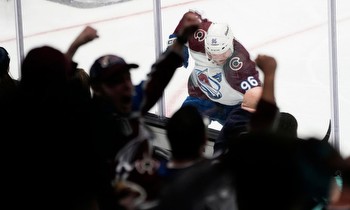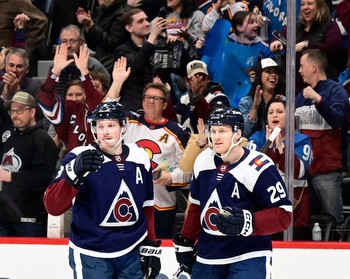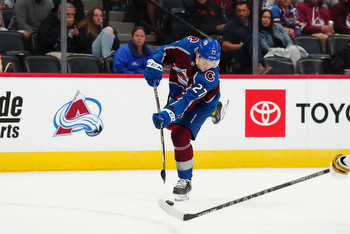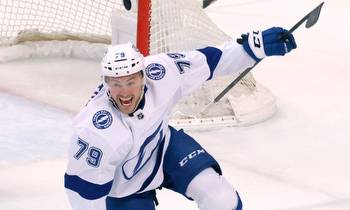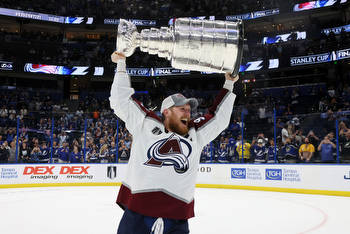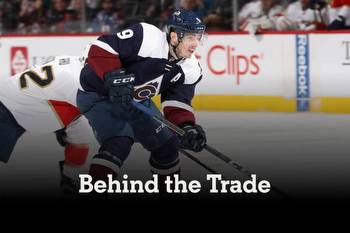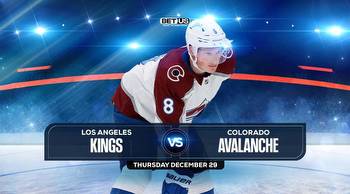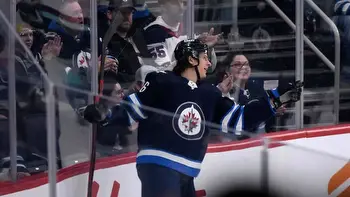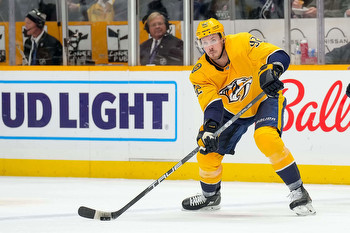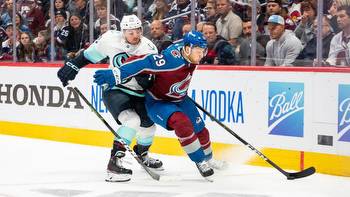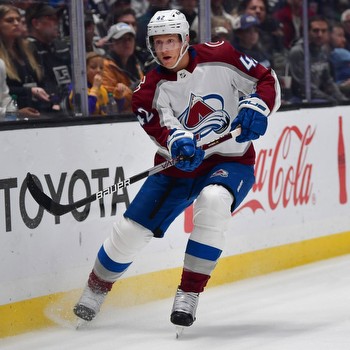Predicting Colorado Avalanche lineup after free agency mad dash
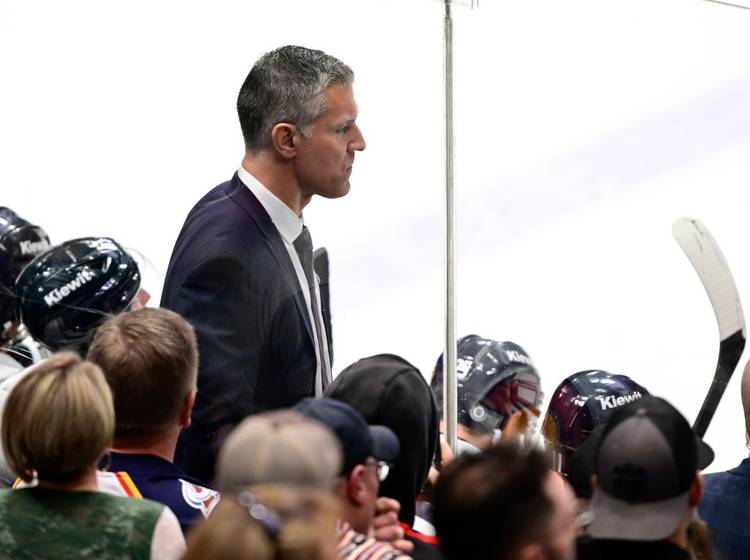
If the Avs had prevailed in Game 7, as they probably should have considering the extent to which they outplayed the underdog Kraken that night in April, there’s a fair chance their 2023-24 lineup would look mostly indistinguishable from last season’s.
But with a small army of pending unrestricted free agents, a first-round playoff exit for the defending champions all but etched their fate in stone. Colorado was due for a supporting cast overhaul.
After just two days in July, the new-look Avalache roster was already close to complete.
“We’ll still tinker around the edges, I think, potentially,” Avalanche general manager Chris MacFarland said. “But we’ll let it breathe.”
With multiple draft-week trades, free agent signings and contracts extensions, the Avs have pieced together a loose form for next season without Gabriel Landeskog. Here’s how it stacks up as of early July:
Forwards
Nathan MacKinnon and Mikko Rantanen — fifth and sixth in league MVP voting, respectively — aren’t a bad pair to build around. Yet this is where the Avs will look most unrecognizable. They didn’t get a single goal from a bottom-six forward in the seven-game series vs. Seattle. Excluding MacKinnon, Rantanen and Artturi Lehkonen (23 combined points), 11 Avalanche forwards combined for nine points in the series.
Now? No J.T. Compher, no Evan Rodrigues, no Lars Eller, no Alex Newhook, no Denis Malgin, no Matt Nieto. The Avalanche re-signed the ever durable Andrew Cogliano at a veteran discount, but he’s the only UFA forward they’ve brought back. As of now, four newcomers are expected to immediately slot into the lineup, and a fifth could potentially become a regular.
Italics = new to the roster | * Restricted free agent whose contract has not been agreed on yet. Colorado has negotiating rights to its RFAs.
The Colton and Meyers contracts will be important. Colton is a championship player and exactly the kind of bottom-six center Colorado needs. But a week after getting traded from Tampa, he was one of 22 NHL players who filed for salary arbitration by the deadline Wednesday, according to the NHL Players Association. Colton told The Post after the trade he hoped to have a deal done by the end of the weekend, so this was an unexpected wrinkle, but one that should speed up negotiations if the team wants to avoid an arbitration hearing. If Wood’s $2.5 million AAV is any indicator, then Colton will likely make north of $3 million.
For now, Drouin is listed on the top line for one specific reason. The low-risk, high-reward signing — as MacFarland described him — has completely lost his offensive edge in the last four years, amassing 17 goals in 163 games. The previous three years, he totaled 52 goals and 0.66 points per game. Maybe the pressure of being from Quebec and playing in Montreal got overwhelming, or maybe he’s just not what he used to be. But what better way to position him for renewed confidence than by putting him on a line with two all-world players, including Drouin’s old buddy MacKinnon?
Of the four main additions, Johansen is the hold-your-breath one in terms of fit. His scoring pedigree matches Colorado’s biggest need, but his skating speed isn’t the strongest aspect of his game. Will he keep pace with Jared Bednar’s system?
Wood has speed to spare, but his penalty minutes are alarming. Disciplined decision-making is the most important part of his game to watch, especially if he shares a line with two other chippy forwards like Colton and O’Connor, both of whom know how to rile up opponents.
The gap at fourth-line right wing is intentional. Eight of the top 11 forwards on the depth chart are left-handed shots, including Rantanen and Nichushkin. They both feel comfortable playing their off-hand side, but not everyone does. Will Colorado feel comfortable making the 2021 first-round pick Olausson a full-time NHL player without as much experience as Meyers? Olausson is also a lefty. Foudy is a right-handed shot, at least, but the same question applies to him.
There’s money to spend on older depth players still. How much of it is dependent on those RFA contracts. More on that soon.
Defensemen and goalies
There’s much less to say about Colorado’s defensemen and goaltending. It’s almost identical, the absence of Erik Johnson not withstanding. Byram plays the left side usually, but he’s listed on the right here because Colorado has a surplus of lefties and not enough righties. It’s similar to the forward group.
Say that Colorado’s three scratches on an average night are MacDermid (one forward/defenseman hybrid), Hunt or Malinski (one defenseman) and any of the three depth forwards listed above in the fifth row. That adds up to 20 players with a cap hit between approximately $76.3 million and $76.5 million on any given night — excluding Landeskog’s $7 million, an effectively moot contract this season in terms of cap space.
The league cap inched upward to $83.5 million for 2023-24. That leaves the Avalanche with about $7 million to work with, ideally in one-year contracts. An active roster consists of 23 players. Colton and Meyers are Nos. 21 and 22, and their new deals will put a dent in the remaining $7 million. But there still should be plenty of room for MacFarland to find a high-quality bottom-six right wing before training camp.
He could even have $3 million to spend, be it on one player or multiple. (It never hurts to have more defensemen.) The Avalanche waited out the market last summer and got Rodrigues, a top-six forward, at a $2 million bargain.
That’s the right strategy in a situation like this, too. Let the waiting game begin.







